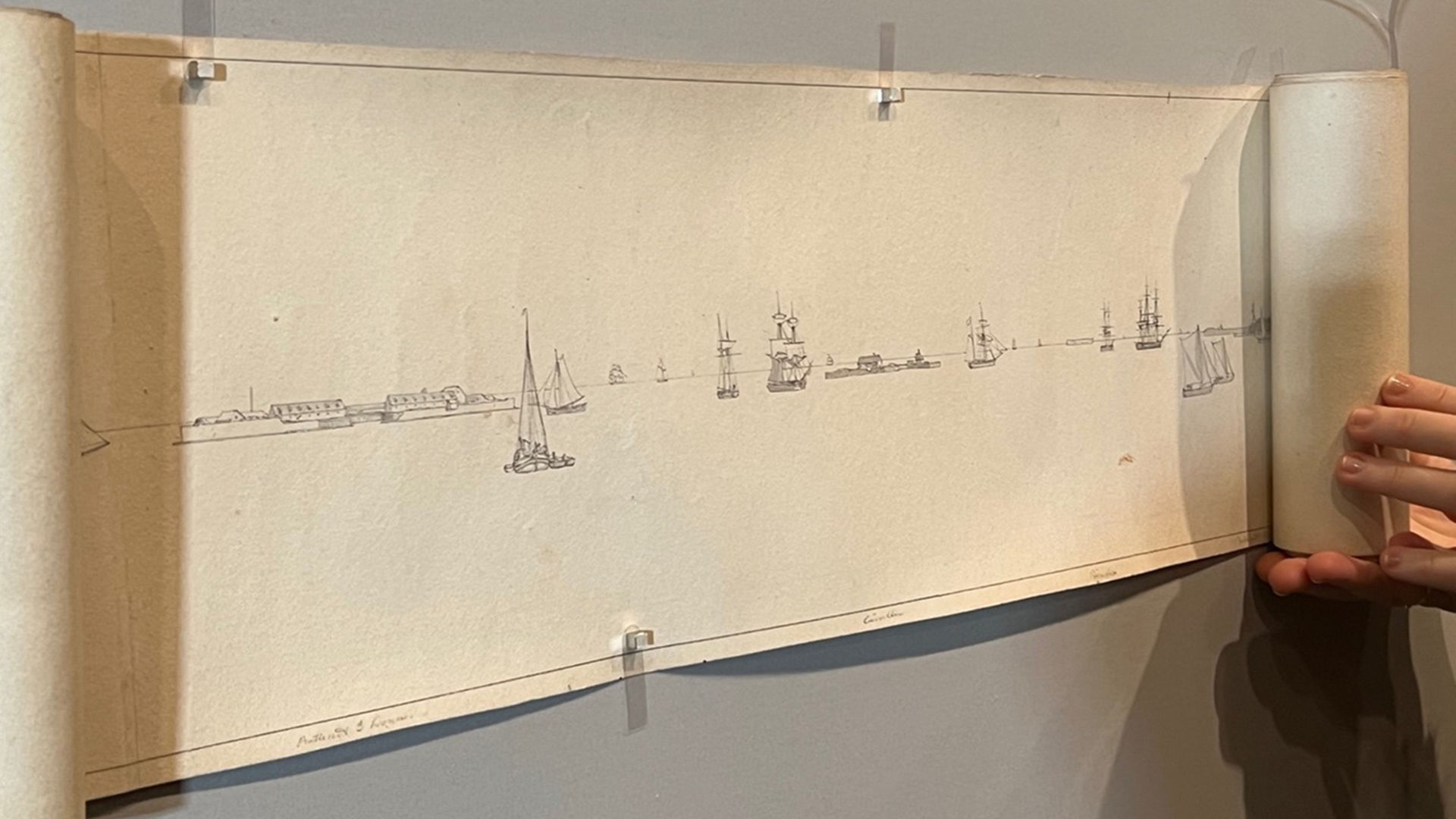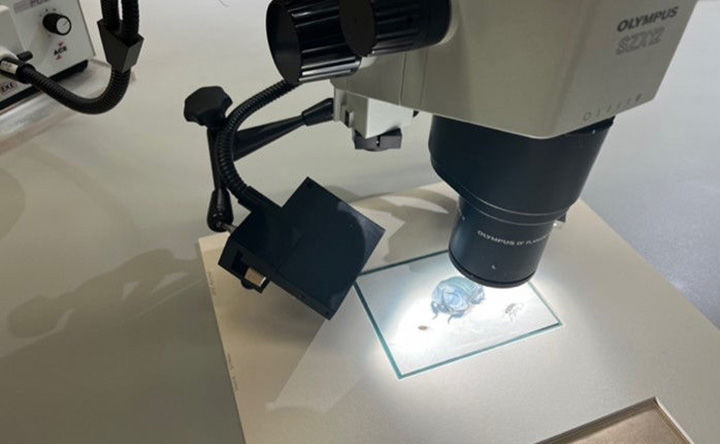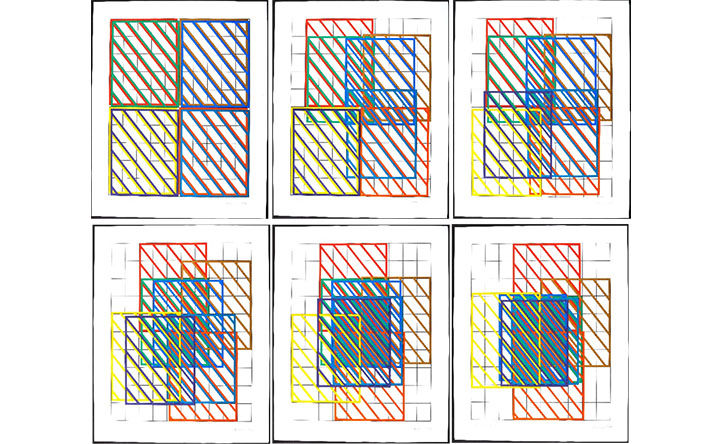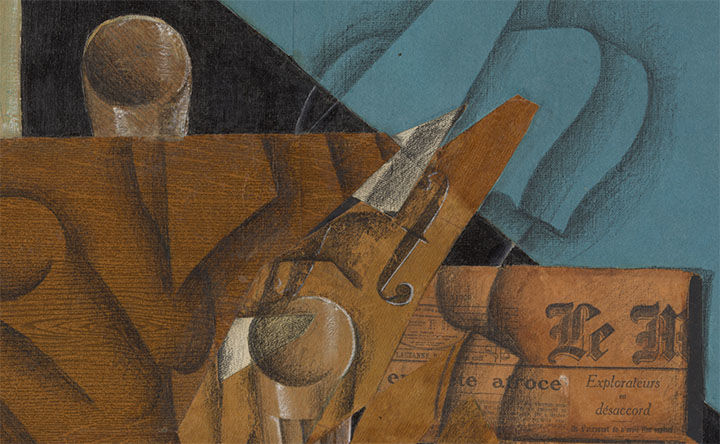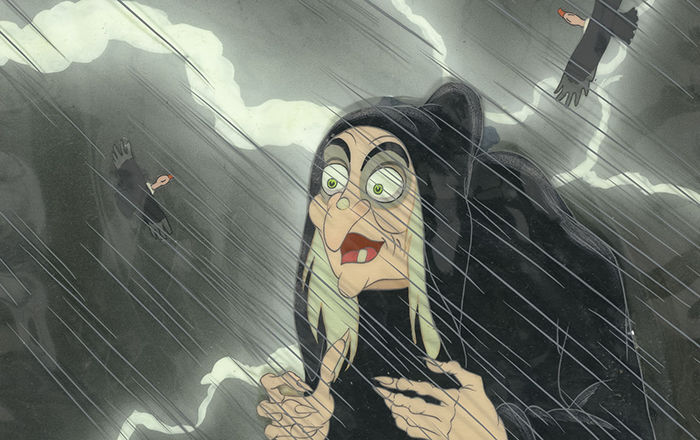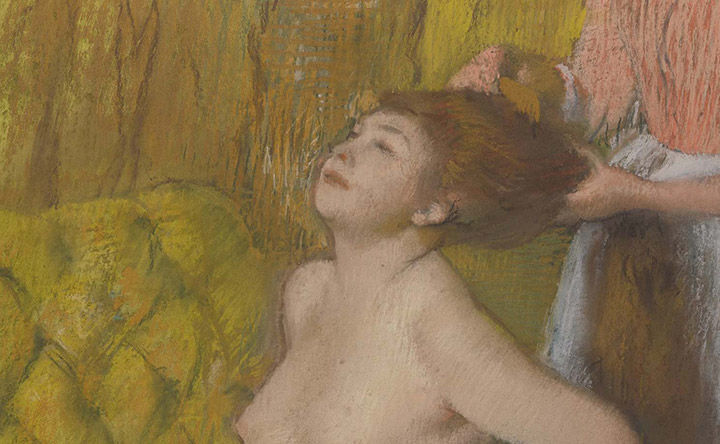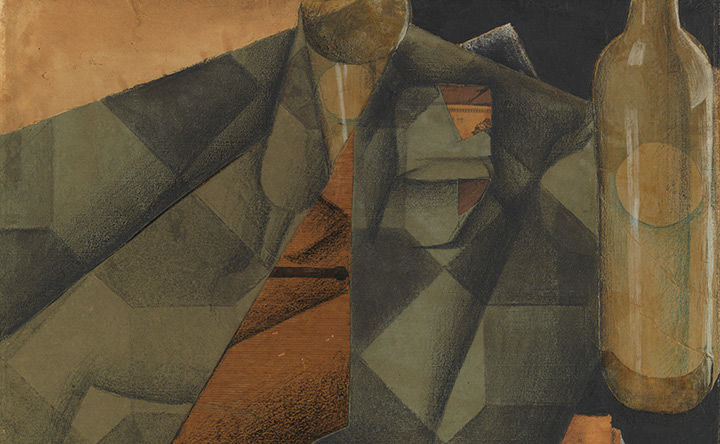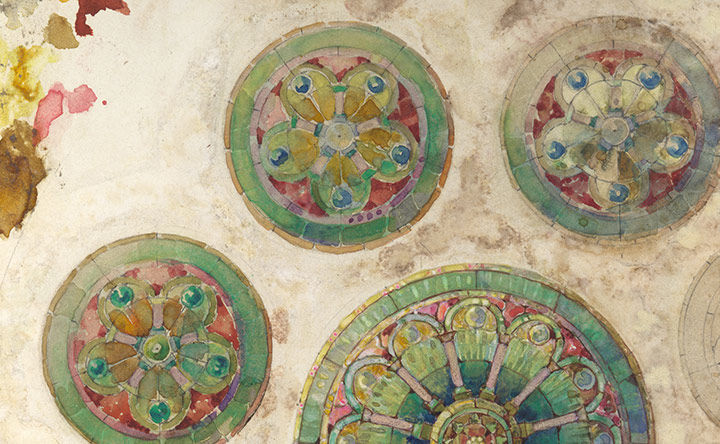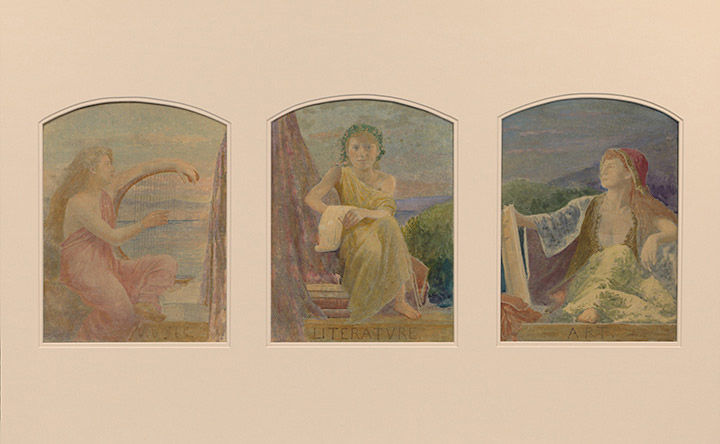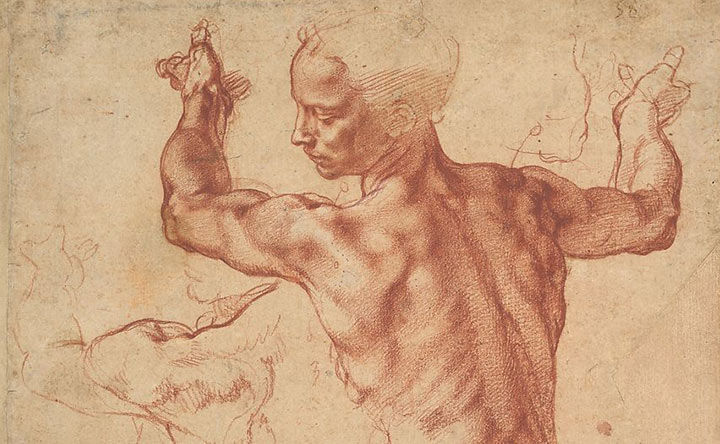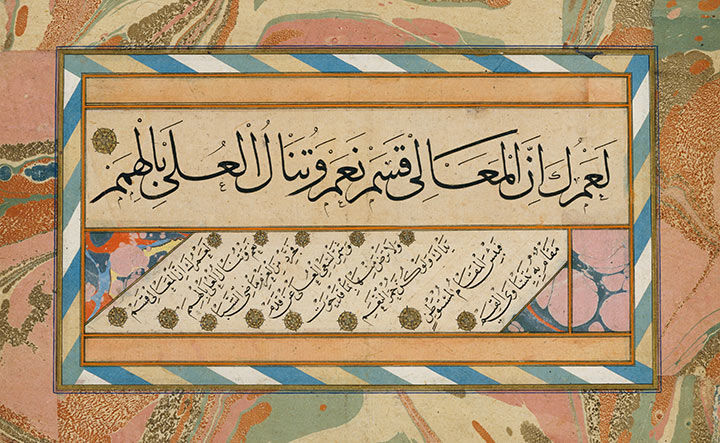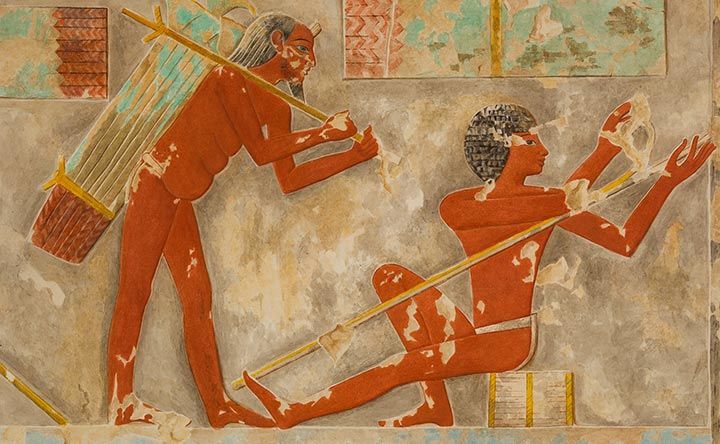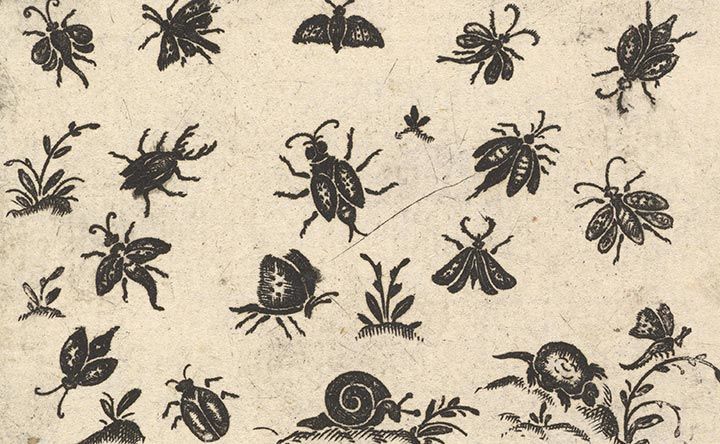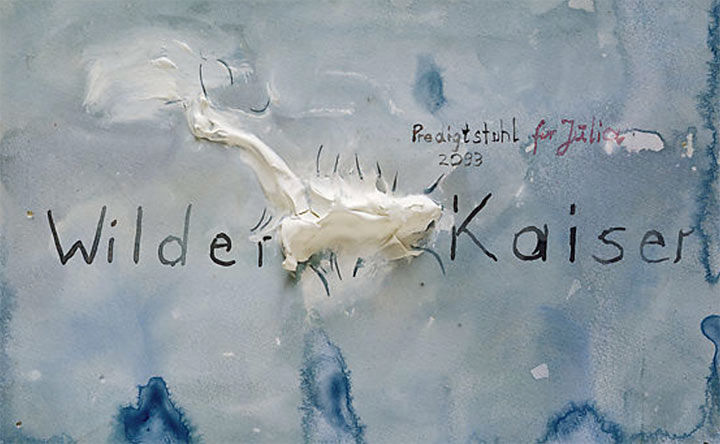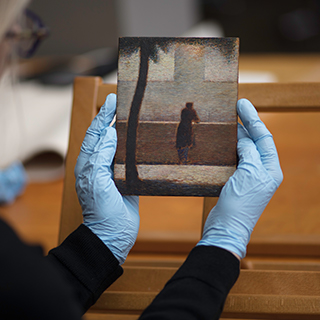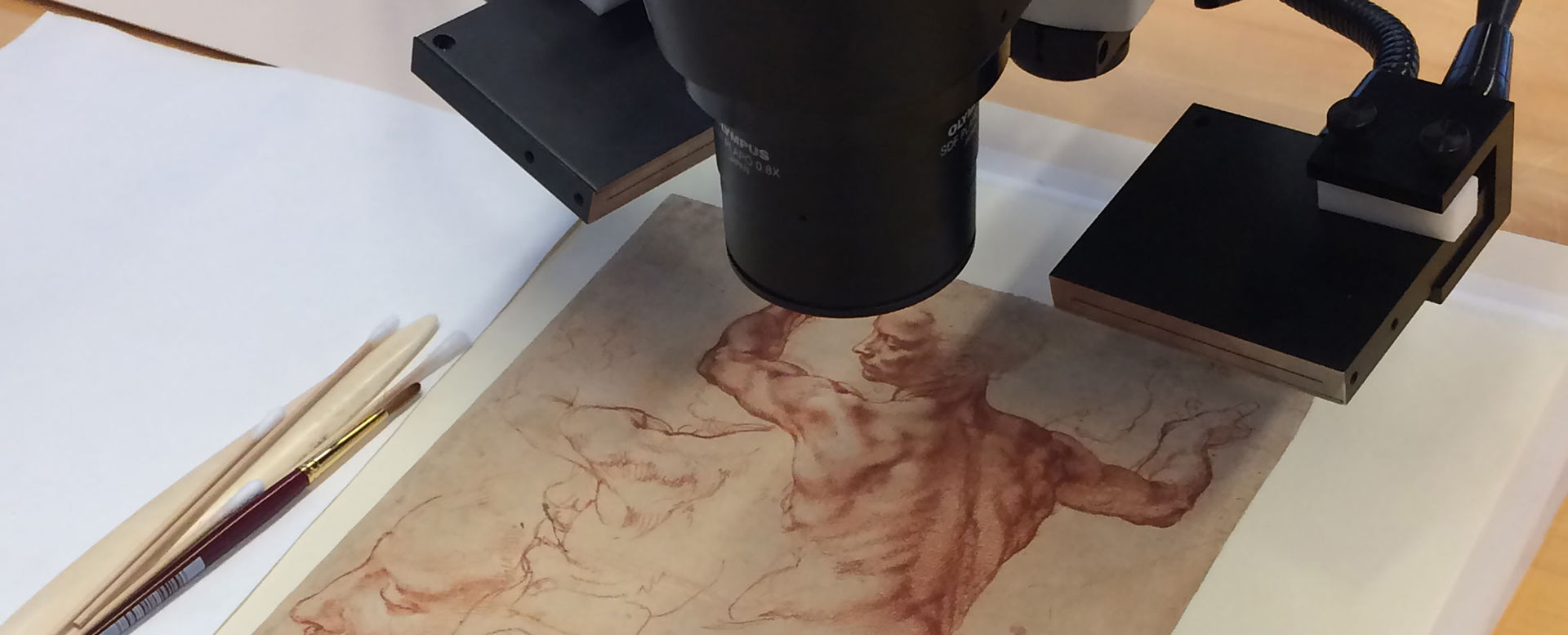
Conservation Projects and Research
The paper conservation staff pursues a wide range of research on works of art and artists’ materials such as parchment, papers, plastics, dyes, and pigments. Our research focuses on the materials and methods used to make prints and drawings, conservation treatment techniques and strategies, and preservation practices. Our findings are disseminated in lectures, web features, printed journals, and exhibition catalogs. These research projects contribute to the care and scholarship of the Met’s collection and others around the world.
Balancing act: Temporary inpainting on a fragmentary leaf from an Ashtasahasrika Prajnaparamita Sutra
An object included in the exhibition Mandalas initiated discussions amongst curators and conservators about the ethical considerations of inpainting.
Keep scrolling!
Recently, three exhibitions with works on scrolled paper challenged Paper Conservation staff to find mounting methods that showcased the objects in visually exciting ways.
Disrobing of Draupadi
Technical examination uncovers the creative process of a work attributed to the Indian painter Nainsukh.
Interdisciplinary Fellowship
The 24-month Diamonstein-Spielvogel Fellowship allows a fellow to work collaboratively between the Departments of Drawings and Prints, Paper Conservation, and Scientific Research.
Conserving Dóra Maurer’s Displacements, A Series of Six Gouache Paintings On Paper
Paper Conservation Fellow Cornelia Busslehner examines Hungarian artist Dora Maurer’s displacements (a) series.
What do pre-program interns do in Paper Conservation?
Conservator Rebecca Capua talks about opportunities for prospective graduate students in the Department of Paper Conservation
Close Look: The Visual Games of Juan Gris
Rachel Mustalish explains how the artist’s unorthodox techniques fool and delight the eye
Using the Astronomicum Caesareum Book
This most sumptuous of all Renaissance instructive manuals explained the use of the astrolabe and other instruments used for computing planetary positions
Plastic, Paint, and Movie Magic: A Close Look at Disney Animation Cels
The animated films of Disney are some of the best known worldwide. The Metropolitan Museum of Art owns several of the animation cels and drawings that were a fundamental part of the film making process.
Facsimiles, Artworks, and Real Things
Rebecca Capua looks at the history of facsimiles in The Met and contemporary institutions, and discusses them as objects of preservation and education and as objects of art themselves.
Precious Powder: The Fragility of Degas’s Pastels
Degas’s Woman Having Her Hair Combed is remarkable for its vibrant colors, ambitious scale, and the magnetic intimacy of its subject. Although the composition appears to be in excellent condition, every aspect of it presents risks of instability and demands careful attention from conservators.
A Closer Look: Juan Gris’s Book and Glasses
Enjoy a focused look with a conservator at the intricate techniques and innovated materials used by this Cubist artist.
What Lies Beneath a Tiffany Drawing, Part Two
Take a view beneath the surface of Louis Comfort Tiffany drawings in a conservator’s investigation of his studios’ practices.
What Lies Beneath a Tiffany Drawing?
Take a view beneath the surface of Louis Comfort Tiffany drawings in a conservator’s investigation of his studios’ practices.
Conserving Michelangelo
Watch a video showing the conservation of a Michelangelo drawing on loan from Christ Church Picture Gallery, Oxford, in preparation for the exhibition Michelangelo: Divine Draftsman and Designer.
The Art of Marbled Paper: Dynamic Fluids in Flow
A conservator’s exploration of the tradition of marbled paper, a popular art form across much of Central Asia that came to be adopted by the Deccan empires.
Papyrus-Making in Egypt
This Timeline of Art History essay details papyrus’s central role in Ancient Egypt. The word papyrus refers both to the writing support invented by the ancient Egyptians and the plant from which they made this material.
Blackwork: A New Technique in the Field of Ornament Prints (ca. 1585–1635)
This Timeline of Art History essay discusses the development of blackwork as a printing method in the late 16th century. When used in relation to prints, the term refers to a special engraving technique adopted from the goldsmith trade, a specific method of enameling called champlevé.
Modern Materials: Plastics
This Timeline of Art History essay examines the development of plastics beginning in the mid-nineteenth century and how in time they found their place as a material for the creation of art.
Keep Exploring
Conservation at The Met
The Metropolitan Museum houses a world-renowned complex of scientific research and conservation facilities, each of which serves as a training ground for conservators across a variety of specializations from around the world. This project list provides a small sample of conservation research activities across the Museum.

